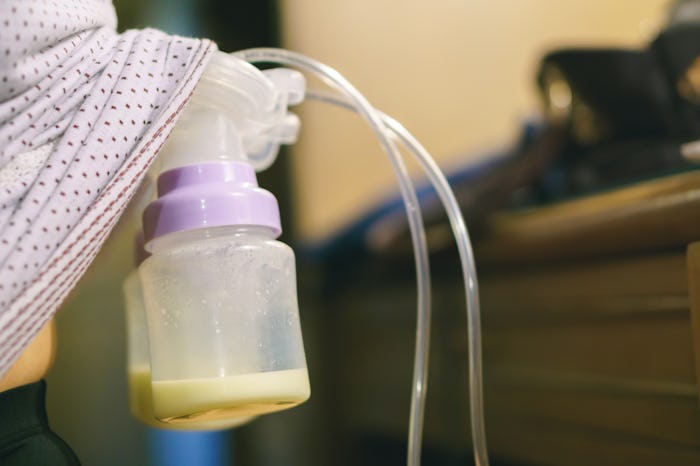Life

Your Breast Pump Parts Aren't Immortal — Here's When They Need Replacing
All moms know how crazy life can get, especially when you have little ones to take care of. You might end up at a fancy dinner with spit up on your dress, or you may realize that you’re wearing your shirt inside out in the middle of grocery store. There are only so many things a mom can prioritize at any given moment, but some essentials, like your breast pump, still need some TLC. If you feel your pump is in need of a tune up, you may be wondering, when should you replace breast pump parts?
Romper reached out to Jennifer Jordan, Director of Mom and Baby at Aeroflow, who says when you first get your breast pump, you should check out its warranty information to determine what parts are covered. She says that warranties usually cover the pump’s motor for about a year, and cover the rest of the parts and accessories for around 90 days. “If your pump parts wear out before your 90 days are up,” suggest Jordan, “you can usually contact your manufacturer for a replacement.”
Breast pump parts aren’t immortal. Jordan explains that most breast pump motors will last for about 300 hours of usage, but there are warning signs of a failing motor to look out for, which include poor suction, problems with charging, and an unexpected dip in milk supply. Along with the motor, adds Jordan, it’s very important to pay attention to the daily wear and tear on the tubing and flanges, because if they become damaged or dirty, it could affect your milk supply.
You should also be checking out your tubes and flanges for rips or tears along the edges, along with any condensation inside. “If moisture enters the tubing you should replace it immediately,” suggests Jordan, “and keeping a spare set of tubing on hand is always a good idea.”
Along with paying closer attention to the wear on your pump, Jordan says it’s important to take apart and thoroughly sanitize your pump after every use. She notes that the Centers For Disease Control and Prevention recommend washing your hands, inspecting your pumping kit, and cleaning pump dials and any surface your pump will be sitting on before you get started. “Clean your pumping area thoroughly, lay out all pump parts that come in contact with breast milk, and thoroughly sanitize them quickly after your pumping session,” suggests Jordan, “and after every use, store your milk safely in the proper container and label the date you stored the milk.”
Like all baby gear, proper care and maintenance is required if you want to make your pump last. (Especially if you use it often.) Consider it part of your monthly routine to check on your pump parts, and if you have questions related to your pump specifically, call your manufacturer for details.